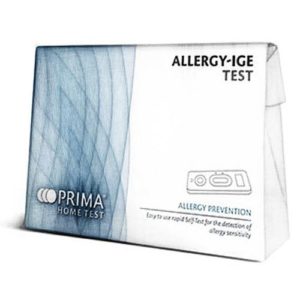Pet allergies are one of the most common forms of allergies, particularly allergies to cats and dogs. They can lead to other allergic diseases such as allergic rhinitis (hay fever) and asthma.
The Primary Source of Cat Allergens Is Not Fur, but the Sebaceous Glands in Their Skin
Cats love to lick themselves, and – as the sebaceous glands are the primary cause of cat allergens – this licking spreads the allergens around. Cat allergens are sticky and they glue themselves to hair and dust particles to create a persistent aerosol. They also get stuck to other things in the house. As ever cat has a sebaceous gland, all breeds of cats can stimulate allergies. There’s no such thing as a hypoallergenic (allergen-free) cat breed.
Even after recognising you have a cat allergy and getting rid of your cat, the allergens from them can remain in the house for up to 6 months, and they can persist in cat bedding for up to 4 years. Allergens are so pervasive they can be found in the homes of non-pet owners and on clothing worn by people who don’t even own pets. Cat allergens have even found their way to the Antarctic, which is impressive because no cats have ever been there!
The Primary Source of Dog Allergens in Saliva
Given the primary source of dog allergens is their saliva, dander (skin particles) and hair help to spread the allergens. This means that, as with cats, all dog breeds potentially cause allergies. Even so, there are some breeds of dogs that don’t shed as much as others, meaning they don’t produce as much dander and may be less allergenic than others.
Additionally, some studies suggest that female dogs may produce fewer allergens than male dogs, and that neutering male dogs may reduce the amount of allergens they produce. Regular grooming and cleaning of a dog’s living space can also help to reduce the spread of allergens.
Other Animal Allergies
While allergies to other animals aren’t as common as dog allergies, people can be allergic to all creatures great and small including mice, rats, horses, guinea pigs, rabbits, birds, and more. The transmission of allergens from these rabbits to clothes can be enough to trigger an allergic reaction and disease such as rhinitis and asthma.
It’s important to note that even if someone isn’t allergic to one type of animal, they can still develop an allergy to another type. Symptoms of animal allergies can include itching, hives, swelling, runny nose, sneezing, and difficulty breathing. In severe cases, anaphylaxis can occur, which requires immediate medical attention. If you suspect you have an animal allergy, it’s best to consult with an allergist to identify the specific allergen and develop a treatment plan. This may include avoiding contact with the animal or using medication, such as antihistamines or inhalers.
Testing for Animal Allergies
It’s important to understand that up to half of all people that are allergic to animals don’t show immediate symptoms of their allergy. If you are concerned that you are allergic to a pet – either your own or someone else’s – and it is causing allergic reactions, a doctor can test you for allergies using skin prick tests and allergen specific IgE allergy tests known as RAST tests. You might have to be referred to an allergy/immunology specialist to get an allergy test done.
A negative allergy test in children doesn’t mean that they won’t later develop an allergy to their pets in the future.
Some studies suggest increasing exposure to animals like cats and dogs can help to reduce sensitivity and allergic disease, but others have suggested that increasing exposure actually has the opposite effect and increases sensitivity.
The Hygiene Hypothesis and Pet Allergies
The hygiene hypothesis suggests that early exposure to certain microbes and allergens, such as those from pets, may help develop the immune system and reduce the risk of allergies. However, the evidence is mixed.
Some studies have found that children who grow up with pets are less likely to develop allergies, while others have found no association or even an increased risk. Factors such as the type of pet, the timing and duration of exposure, and individual genetic susceptibility may play a role.
More research is needed to fully understand the complex relationship between pet exposure and allergy development. It’s important to note that once an allergy has already developed, avoiding the allergen is usually recommended to manage symptoms.
It should be clarified that when people have shown allergic reactions and are already sensitive to animals can reduce and prevent their symptoms by avoiding the animals they are allergic to.
How to Prevent Pet Allergies
We suggest the following simple lifestyle changes that have been shown to help prevent pet allergies –
- Not bringing animals into the home in the first place
- Finding any existing pets new homes
- Avoiding smoking, as exposure to environmental smoke causes some allergies – including allergies to pets – more likely to develop
More difficult lifestyle changes and changes that haven’t been proven to be effective are:
- Restricting pets to one part of the house
- Keeping pets out of the bedroom of the person allergic to them
- Using highly effective air cleaners, whether portable or central
- Removing carpet and other allergen holders from the bedroom
- Washing pets on a regular basis
Another lifestyle change that can help prevent pet allergies is improving indoor air quality. This can be accomplished by keeping windows open for ventilation, using high-efficiency air filters in air conditioning and heating systems, and maintaining a clean home with regular dusting and vacuuming. Additionally, changing air conditioning filters regularly, using allergen-proof bedding, and avoiding stuffed animals or other items in the bedroom can also help reduce pet allergy symptoms.
Other Options
If you are going to have trouble avoiding exposure to animals, there are treatment options including medication such as intranasal corticosteroid sprays (INCS) and antihistamines, which are used for hay fever.
Lifestyle Changes to Manage Pet Allergies
I’m not a great believer in medication when a simple lifestyle change can make just as much a difference. I’n not a pill popper. In my opinion, adopting one or more of the following, lifestyle changes can help manage pet allergies. I would recommend adopting as many of these practices as possible for noticeable improvements in your symptoms. Try these lifestyle tweaks and et me know how you get on.
- Keep pets out of bedrooms and off furniture
- Use HEPA air purifiers to remove allergens from the air
- Get the hoover out! Vacuum regularly with a HEPA filter vacuum
- Wash hands after petting or playing animals
- Bathe pets weekly to reduce dander (if possible)
- Consider hypoallergenic breeds (though no breed is truly allergen-free)
Many vacuum cleaners, including those from well-known brands, come with HEPA filters as a standard feature. HEPA filters can also be found on some budget-friendly cleaners. Air purifiers are available at various price points from popular retailers. Personally, i’ve got a Dyson for hovering up the house and I bought a cheap air purifier from Argos
Working with an allergist can help identify the most effective combination of medications and lifestyle changes for individual needs. If you need further assistance, consider asking your GP for a referral to an allergist. The British Society of Allergy and Clinical Immunology (BSACI) website maintains a list of qualified specialists.
Another option is allergen immunotherapy – known as desensitisation – which has been shown to work for some people. This allergen immunotherapy should only be conducted by clinical immunology/allergy specialists.
Home Allergy Test Kits
At Zoom Health we get lots of emails and questions about allergies. Many of you have allergies and are not sure what they are. Others are finding that they want a specific test to confirm that they do have a particular allergy. As a chronic hay fever sufferer I know how bad an allergy can make you feel so I am always trying to help when I get a question about allergies.
Dealing with allergies can be a frustrating and often debilitating experience. Whether it’s the sneezing, the itching, or the difficulty breathing, allergies can severely impact your quality of life. Fortunately, there are a variety of methods available to help you identify and manage your allergies. One of the most convenient and accessible options is a home allergy test kits.
These test kits are designed to provide you with fast and reliable results so that you can take control of your health and avoid potential reactions and intolerances. With a wide range of options available, you can find an allergy test kit that suits your specific needs, whether you are testing for food or environmental allergies.
Using a home allergy test kit is simple and straightforward. All you need to do is take the test, interpret the results, and use the information to make informed decisions about your health and well-being. The clarity that comes from ruling out basic allergies can be a significant relief for those who have been struggling with symptoms without knowing the root cause.
If you experience symptoms such as redness on the skin, a rash, lacrimation, or repetitive sneezing, it may be time to consider a basic allergy test such as the Prima Home Allergy Test Kit. For more specific requirements you may want to consider a dedicated test kit such as a Cat Allergy Test Kit or Airborne Allergy Screen Kit. For more information on allergies, you may also want to refer to our Allergy Testing FAQs.
Overall, if you’re struggling with allergies and looking for a convenient and accessible way to identify potential triggers and take control of your health, investing in a home allergy test kit is a smart choice.
Photo “The Causes and Symptoms of Pet Allergies” by Anthony Cunningham for Zoom Health
Zoom Health is a leading UK supplier of Home Health Tests and Earplugs






